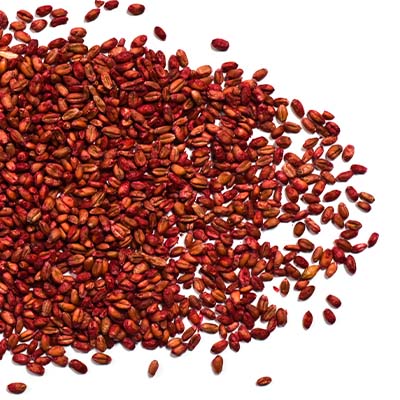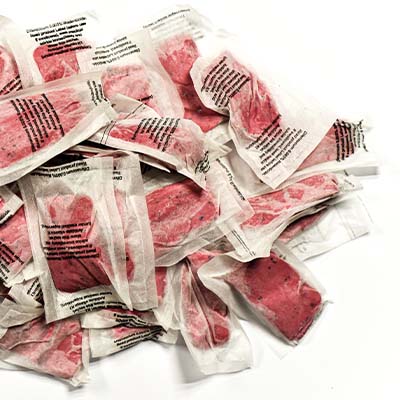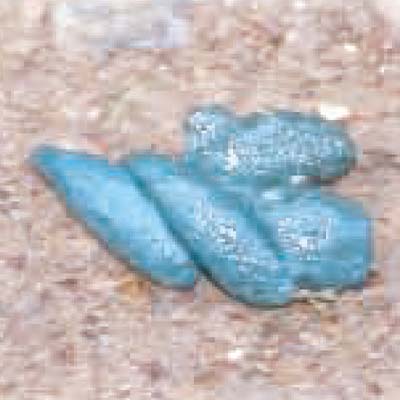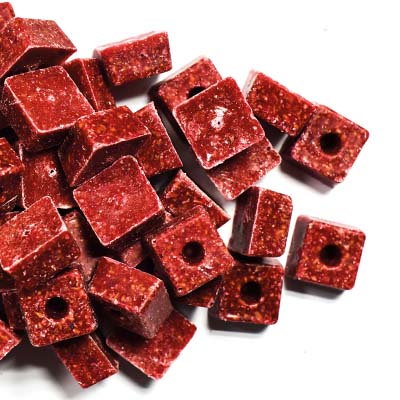Anticoagulants work by preventing the assimilation of vitamin K1, one of 12 ‘blood clotting factors’ within vertebrates. Once a lethal dose of poison has been eaten by the rodent, there is a lag period while the existing vitamin K1 in the body is used up. This normally takes three to four days, after which the blood will no longer be able to clot, and any haemorrhaging inside the body will lead to death. The great advantage of the lag period is that rodents never associate the bait they have eaten, with the symptoms of poisoning they go through. This means it is possible to attain 100% control of the population, as the rats will continue to feed on the bait ignorant of the fact it is killing them.
Active Ingredients
The most widely used anticoagulant active ingredients used in the UK as rodenticides are:
‘Acute’ poisons which work more quickly (within minutes of being eaten), have several disadvantages over anticoagulants. Firstly, if a sub-lethal dose is consumed, rats and mice may become ill but not die. Such illness is remembered and the rodents will avoid eating the bait again, compromising the control programme. Typically only 55-65% of the population will be killed when acute poisons are used.
Coumateralyl
Bromadiolone
Brodifacoum
Difethialone
Flocoumafen
‘Sub-acute’ rodenticides containing Cholecalciferol (vitamin D3) offer a resistance breaking alternative to anticoagulant rodenticides. They also present a relatively low risk of secondary poisoning to non-target species. Once ingested the time taken to kill the target species can be similar to that of anticoagulants, but generally around three days. The ingestion of baits containing Cholecalciferol causes hypercalcemia which leads to the calcification of blood vessels and ultimately death from heart, kidney or multi-organ failure.
Formulations
 |
Highly palatable and effective against most pest rodents, particularly where the population has been feeding on whole grain foodstuffs. While mice peel off the outer shell of a grain, rats will pick up a grain in its paws and eat it in three or four bites. They are made from micronised grain, which has been treated to prevent germination and start the conversion of starches to sugars, making it even more attractive to rodents. |
|
|
Formulated using edible waxes which bind the ingredients together, including high quality culinary grade wheat flour and chopped wheat. Block baits are made with a hole in the centre so they can be wired into place or threaded onto a spindle inside a bait station. This offers complete bait security from non-target animals. |
 |
Sometimes referred to as ‘paste’ bait or ’fresh bait'. It is made from a mixture of wheat flour, chopped grain, soft lard and synthetic peanut flavouring and offers a high calorie, highly palatable feed which is ideal for most situations. It is particularly useful where rodents are being slow to take other types of bait, or where it is proving difficult to tempt them away from their current food source. Pasta baits are available in mastic tubes or in 15g ‘T’ bags. |
 |
Other Ingredients Baits have been designed to ensure rats and mice find them, eat some, then return later to eat some more. Special aromas help rodents locate them easily and synthetic taste additives encourage repeated feeding. Biological preservatives stop the growth of fungi or bacteria when used in damp conditions. Strong dyes are included which colour the rats’ droppings, giving a good indication as to whether they are eating the bait. |

